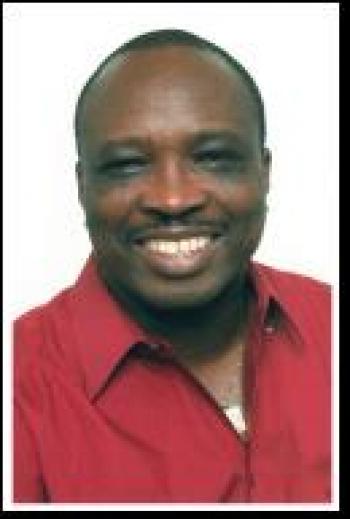THE FULANI MENACE

|
LAST WEEK, THIS column went to town on the issue of Fulani Herdsmen pitting the problem at the feet of President Buhari; his perceived slowness to act, and a greater perception of him as an ethnic bigot, a religious zealot. Well, I goofed. I fell into the Nigerian pothole of personalizing issues, seeing the problem as solely that of the man at the helm to resolve and placing the sins of others on his shoulders while indirectly absolving the real culprits, or minimizing the culpability of other actors. Because our institutions are weak and corrupted, we look up to individuals to address systemic problems. Since writing last week’s piece, two governors from the Middle Belt have come out to declare that there is no land for grazing colonies in their states. A Fulani ruler has told us that he presented to the Federal Government, video and audio of 800 Fulani herdsmen killed in one weekend in Taraba State. I wonder how the ruler’s video men were singled out for accreditation to record the killings for their king. Thank God, a very kind Aso Rock shielded the nation from such gory viewing. In any case, it has come to light that the highest traditional rulers in the north are patrons of Fulani Herdsmen. We know not if the president is still a patron of the AK-14 wielding shepherds, as he was known to be. Since then, a handshake has been extended across the Niger in a different direction from that of the 2015 Presidential Elections.It sounded not so much borne out of mutual affection, rather it was a federation of allies against a perceived common foe – a matter of forced friendship with your enemy’s enemy. Would it not have been more desirable had the handshake been on account of being my friend’s friend. Very soon the hands will return to their natural positions, the warmth will thaw, and the mutual distrust that has characterized relations between the hand shakers will resume. It has happened so many times before. Very few are amused, and very few believe. Elsewhere, a governor has been sighted kitted in military fatigue, surrounded by local hunters in what appears like a drill in anticipation of war. Also, a generalissimo donning a tiger’s skin has been installed to fill a vacancy that lasted 20 years (7/7/1998 – 1/13/2018).A foremost monarch, the one who installed the generalissimo has requested the videographer king to “watch your words”.In the macabre drama that is the Fulani Menace, the dramatis personae include the High Chief who was a Secretary to the Federal Government, a Finance Minister, and now a farmer. We all remember when his farm was destroyed, and when they returned to kidnap him; now they have burned down his farm. I look back to those years when our dear chief was peddling the World Bank elixir called SAP –structural adjustment program – to an uninterested nation. He was bold, eloquent and near convincing. Now the man who bravely confronted the Ota Farmer for the nation’s top job in 1999 has been rendered helpless by the locust that is the Fulani, his cattle and his venomous talent for destruction. The usual hell raising attended the incident with the assurance that the chief’s people “will not take this lightly”. Meanwhile, smaller farmers are looking at the man and saying “if they can do this to him, what can’t they do to us”. They watch their farms destroyed and all they get is the self-assurance that ‘God Dey’. These are no ordinary times; it’s been a while since Nigerians have been treated to ordinary times outside the Liturgical Calendar. These times call for sober reflection and critical soul searching. Most compelling question to ask ourselves is ‘Do we know, or do we understand what we are dealing with in regards to the Fulani Menace?’ Is it simply a matter of the Fulani and his cattle versus the Farmer and his corn? Are there deeper issues involved? Are there agendas beyond the obvious? We have gone from one violent crisis to another – Niger Delta Militants, Boko Haram, IPOB, and now Fulani Herdsmen – is there a connection between all these? After Fulani Herdsmen, what is coming next? Can we as a nation approach this problem with a united commitment to seeking lasting peace, because all the crises earlier mentioned have not gone away; rather they have remained with us with varying levels of intensity. We hear of different stocks of Fulani cattlemen- the settlers, the semi settlers, and the migrants. What are the composition, the characteristics and the needs of each different group? How do these factors relate with their hosts and the peoples they encounter? How can such relationship be managed within the context of a multi-ethnic and multi-religious nation? A lot of education is required for the rest of us. Where are these Fulani from? What redress do we have in the event of being victimized by their trade and how do we go about seeking such? Why do migrant Fulani have to be so heavily armed? The mere spectacle of men bearing sophisticated weapons is intimidating and a threat to communities seeking to live in peace;. A lone Fulani armed with AK-14 rifle,a licence to terrorize with impunity,commands a monopoly of terror over a community with Dane guns, bows, arrows, machetes, and axes. What forms of identity do Fulani Herdsmen have to carry? Are they obligated to register their presence wherever they go? Are Fulani Herdsmen licensed to possess the weapons they carry? Can host communities directly, or through local law enforcement, demand to verify such licences? Can the local communities be issued licences to bear comparable arm for self-defence? Unless and until these and other questions are answered, lasting solutions to the issue will continue to elude us. What frightens one the most is the likelihood of migrant terrorists infiltrating the ranks of herdsmen roaming freely in our lands. May the Good Shepherd guide us to peaceful and lasting solutions. |
© 2024 - Catholic Archdiocese of Ibadan





